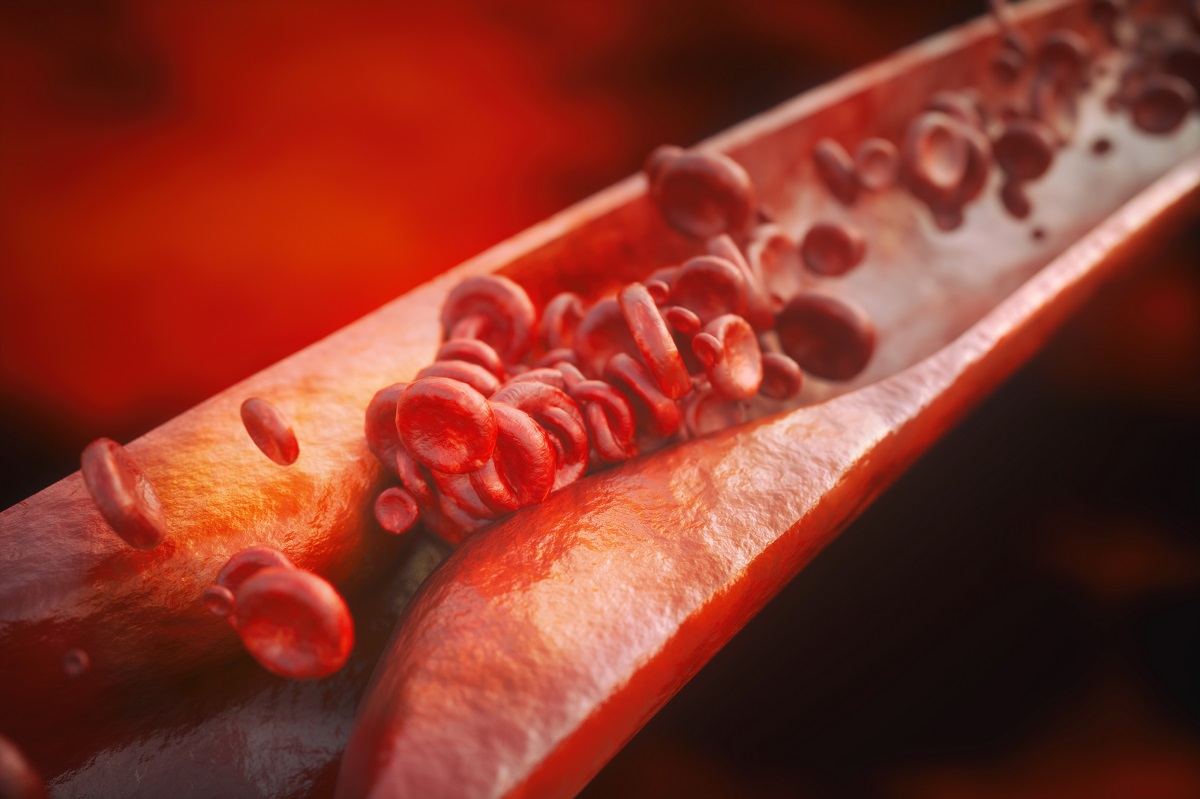
Research at Khalifa University’s Department of Biomedical Engineering, led by Assistant Professor Dr. Sungmun Lee, has developed a target-specific delivery system encapsulating antioxidants to ensure their successful delivery to cells damaged by atherosclerosis.
Atherosclerosis is a chronic inflammatory disease in which the inside of an artery narrows due to the build-up of plaque. For unknown reasons, white blood cells—also known as leukocytes—begin to attack the endothelium of the artery, and the ensuing inflammation leads to the formation of the atheromatous plaques, which accumulate over several years.
Inflammation is a natural defense mechanism induced by the body’s immune system to facilitate tissue repair. When inflammation is prolonged, there is a progressive shift in the type of cells present at the site of the inflammation, characterized by simultaneous destruction and healing of the tissue from the inflammatory process.
Oxidative stress induced by the generation of excess reactive oxygen species (ROS)—a group of small reactive molecules that play critical roles in the regulation of various cell functions and biological processes—is now understood to be implicated in the kind of vascular injury seen in atherosclerosis.
“Overproduction of ROS accelerates the process of inflammation and induces many inflammatory diseases such as cardiovascular disease, asthma, Alzheimer’s disease and cancers, as well as atherosclerosis,” explained Dr. Lee.
ROS are produced as by-products of normal cellular metabolism and are very useful tools to destroy biological pathogens. However, they are not pathogen-specific. To avoid toxicity to host cells, the body produces oxygen scavengers known as antioxidants. These antioxidants can convert ROS into less reactive and non-toxic compounds such as water and oxygen. Organisms usually maintain complex systems of overlapping antioxidants, such as glutathione and enzymes produced internally, and the dietary antioxidants vitamin C and vitamin E.
At low concentrations, ROS serve complex signaling functions, but when their production is uncontrolled through an imbalance in the oxidant/antioxidant mechanisms of the body, oxidative stress occurs. As the ROS activate endothelial cells, the endothelial cells then generate more ROS, and atherosclerosis becomes a self-propagating health concern if left unchecked.
“Scavenging of reactive oxygen species by antioxidants holds great promise to alleviate the symptoms of cardiovascular diseases and atherosclerosis,” said Dr. Lee. “In atherosclerosis, damaged endothelial cells generate more ROS and inflammatory drug candidates; however, antioxidant enzymes such as catalase are easily degraded in the body, and superoxide dismutase antioxidants such as tempol and tempo can diffuse into any type of cells indiscriminately.”
For antioxidant enzymes such as catalase and superoxide dismutase (SOD) to be employed as therapeutic drugs in the treatment of atherosclerosis, an effective drug delivery system is required as these antioxidants are not membrane-permeable and easily degrade in vivo. Even membrane-permeable antioxidants, such as tempol or tempo (both SOD enzymes), need a target-specific drug delivery method due to their non-specificity, or their tendency to catalyze more than one specific reaction.
Additionally, biomaterials originating from the host are much less likely to cause a response to their use as drug delivery vehicles. To minimize response, Dr. Lee used human acute monocytic leukemia cells (THP-1 cells) grown in the lab to encapsulate antioxidants including catalase, tempol and tempo. The results showed that monocytes (a type of white blood cell) can encapsulate both hydrophilic and hydrophobic antioxidants and scavenge ROS to the same level as free antioxidants in vitro.
“We found that antioxidant-loaded monocytes effectively targeted the damaged endothelial cells rather than other types of cells and the antioxidants scavenged more than 90 percent of the intercellular ROS generated by cytokines or exogenous ROS,” said Dr. Lee.
The results from this research promise a novel monocyte-based drug delivery system that will have numerous applications in the treatment of cardiovascular diseases and other disease associated with free radical damage, such as kidney disease and diabetes.
Dr. Lee’s research was presented at the first International Healthcare Engineering Innovation Group (HEIG) Workshop, held at KU Main Campus in November.
Jade Sterling
News and Features Writer
5 February 2020






